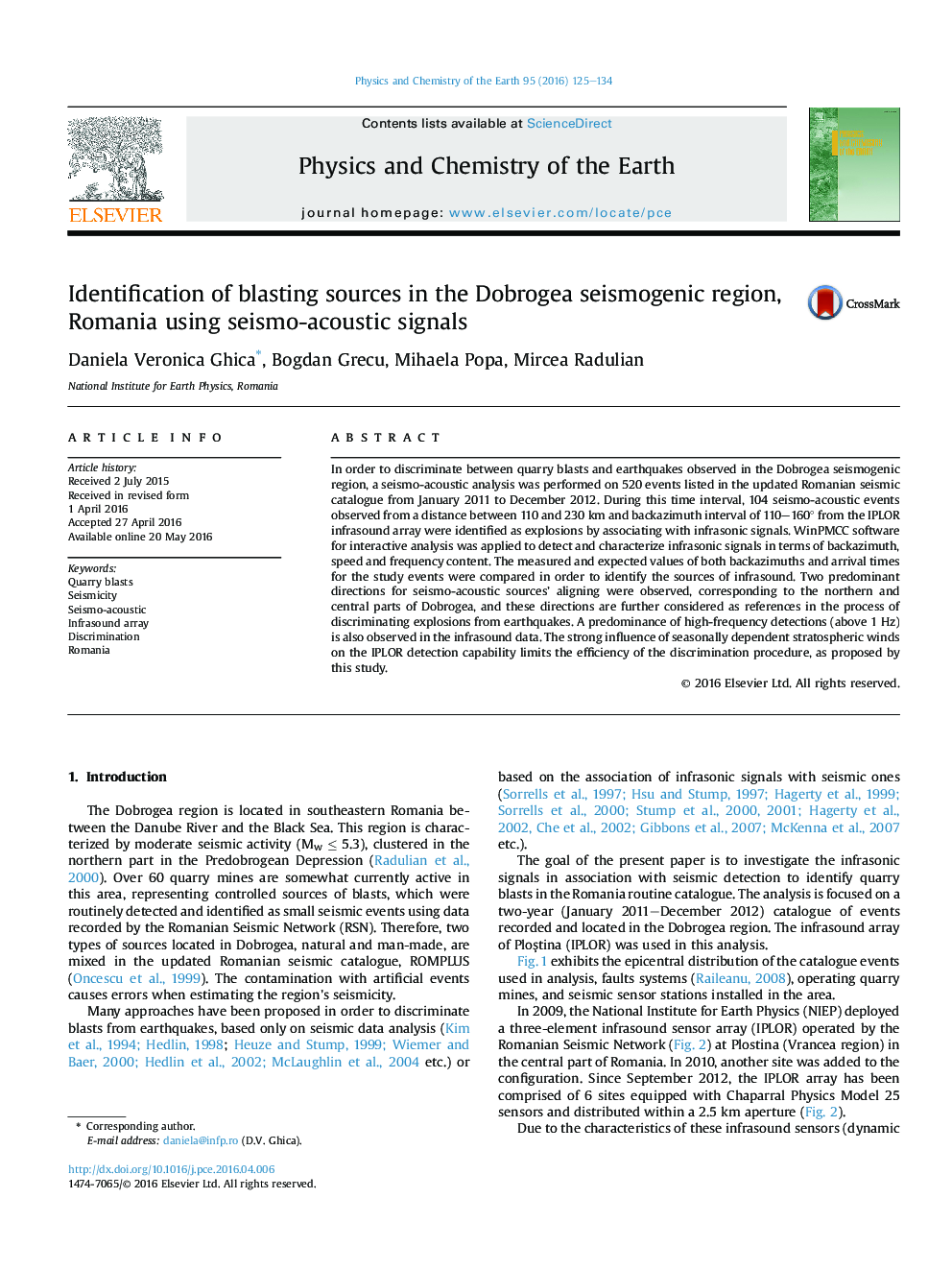| Article ID | Journal | Published Year | Pages | File Type |
|---|---|---|---|---|
| 4720793 | Physics and Chemistry of the Earth, Parts A/B/C | 2016 | 10 Pages |
•Seismo-acoustic analysis to identify quarry blasts in the Romania routine catalogue.•Discrimination between quarries explosions and tectonic earthquakes in Dobrogea region.•520 events were analysed, covering two-year (2011 and 2012) ROMPLUS catalogue.•WinPMCC software was used for analysis of infrasonic signals detected by IPLOR array.•104 seismo-acoustic sources were identified between Dobrogea seismic events.
In order to discriminate between quarry blasts and earthquakes observed in the Dobrogea seismogenic region, a seismo-acoustic analysis was performed on 520 events listed in the updated Romanian seismic catalogue from January 2011 to December 2012. During this time interval, 104 seismo-acoustic events observed from a distance between 110 and 230 km and backazimuth interval of 110–160° from the IPLOR infrasound array were identified as explosions by associating with infrasonic signals. WinPMCC software for interactive analysis was applied to detect and characterize infrasonic signals in terms of backazimuth, speed and frequency content. The measured and expected values of both backazimuths and arrival times for the study events were compared in order to identify the sources of infrasound. Two predominant directions for seismo-acoustic sources’ aligning were observed, corresponding to the northern and central parts of Dobrogea, and these directions are further considered as references in the process of discriminating explosions from earthquakes. A predominance of high-frequency detections (above 1 Hz) is also observed in the infrasound data. The strong influence of seasonally dependent stratospheric winds on the IPLOR detection capability limits the efficiency of the discrimination procedure, as proposed by this study.
